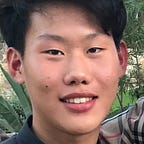My name is Isaac In.
During my sophomore year of high school I helped the W.H.O and the White House with the COVID-19 crisis.
By Spring of 2020 the COVID-19 pandemic spiraled out of control. People were sick, suffering and dying by the millions. The world’s top scientists, doctors, and medical researchers were frantically working on solutions for this global emergency that was getting worse each day.
Could a high school student make a contribution? Was this possible?
My AI Journey
I started coding when I was 12 years old. Taking online courses, I taught myself the python coding language. Then as a high school sophomore, I spent 2019 learning everything I could about Artificial Intelligence. AI intrigued me: Its ability to self-learn; the logic inside its system; the fulfilling challenge that it gave. The problems that AI could solve seemed endless.
I wanted to apply my skills in some way, and I wanted to make an impact in the community. Then, the COVID-19 pandemic hit.
While the world was consumed with the pandemic, this was more personal for me. My grandpa was diagnosed with COVID-19, and I was scared and anxious. I didn’t know if the disease would take his life or spread to my other relatives. All I knew is that I had to do something.
Then, I found a way to apply my coding skills to this big problem,
Kaggle + Crowdsourcing
In December, my father introduced me to Kaggle — a site where large organizations can post problems, as “challenges” for the experts to solve. Through Kaggle’s crowdsourcing platform, thousands of professionals and scientists both compete and collaborate on solutions to world class problems — for cash rewards.
Crowdsourcing is a method used to solve problems through the help of ‘the crowd’. It relies on the principle that the group is smarter than the individual. Or that a group of people working together can be better than the work of an individual.
In many circumstances, the crowd can complete tasks and solve problems with better efficiency and accuracy than individual experts. Crowdsourcing allows for people to share diverse knowledge with others. Online Crowdsourcing uses this method more efficiently as it is easier to acquire a diverse crowd from the web.
The COVID-19 Forecasting Challenge
In early 2020, Kaggle posted the “COVID-19 Forecasting Challenge.”
The White House Office of Science and Technology Policy (OTSP) formed a research coalition with companies and organizations for the purpose of answering key questions about COVID19 from the World Health Organization (WHO) — and they posted the challenge on Kaggle.
This particular competition was about forecasting COVID-19 cases and fatalities around the world. Initially John Hopkins University provided a database documenting the spread of COVID-19, and the goal was to use this information to predict future cases around the world.
The results would help gain control over the spread of COVID-19 and create policies to prevent future outbreaks.
AI takes on COVID-19
The Kaggle competition platform allowed people like me with no prior knowledge in biology to help contribute to solving the COVID-19 Crisis.
Forecasting the spread of a pandemic is a problem that could be solved by using Artificial Intelligence and Machine Learning. I saw this as an opportunity to use my skills and make an impact on the community.
Machine Learning and AI can recognize patterns that traditional computing methods and humans cannot find.
Although the primary goal of the AI model is forecasting the spread of COVID-19, using AI has the extra effect of providing insights on factors that lead to the spread of COVID-19.
Collaborating with The Competition
This was my first time applying my AI and coding skills into a real world problem. I needed guidance and support in figuring out how I should apply and create my solution.
There were many experienced data scientists working on this problem. Luckily, Kaggle enables and encourages collaboration amongst the participants in the competition.
Kaggle has public discussion forums, notebooks, and open source code. Even though it might sound counter-intuitive, Kaggle competitors discuss and trade notes and ideas so they can improve each others’ approaches and solutions. The community of competitors help each other get better.
While each data scientist wants to win the competition — the overall goal is to solve the big problem.
I was able to research more and learn from the more experienced AI experts and data scientists — while developing methods to solve the problem.
I felt inspired, curious, and exhilarated as I saw the amazing work of the community which gave fruit to new ideas that further improved the solutions to come.
The solution starts taking shape
I didn’t know whether my contributions would be valuable. I was nervous, but I took my first step.
I created my first model using decision tree and regression techniques. The system would find patterns from the data and predict how the pandemic would spread in regions around the world. I used a popular machine learning platform called Sci-Kit Learn to create an AI program that analyzed the John Hopkins data to search for patterns, learn, and predict where the next cases of COVID-19 might be.
How would my AI prediction model fare against the AI professionals and data scientists competing on Kaggle? Would my solution be good enough? Or even make a contribution to the COVID-19 forecasting problem?
I uploaded my results, clicked “submit” and waited…
[Coming up- Part 2 : The COVID-19 competition heats up + AI Tools and Techniques]
Twitter: @IsaacIn8
Kaggle: https://www.kaggle.com/haplophyrne
Image Credit: https://www.fda.gov/food/food-safety-during-emergencies/food-safety-and-coronavirus-disease-2019-covid-19
